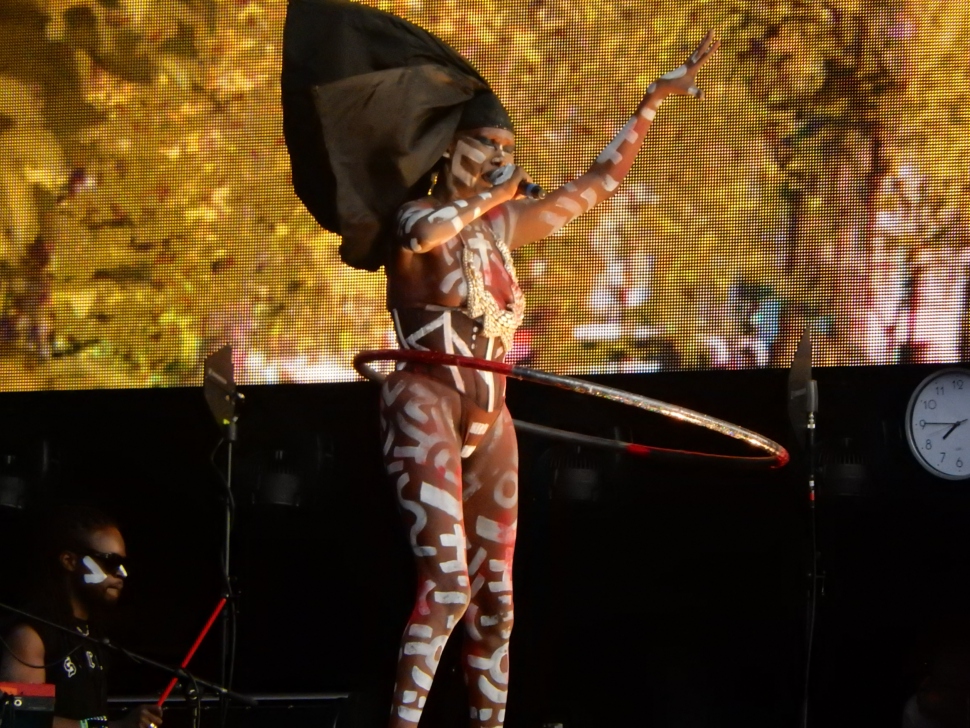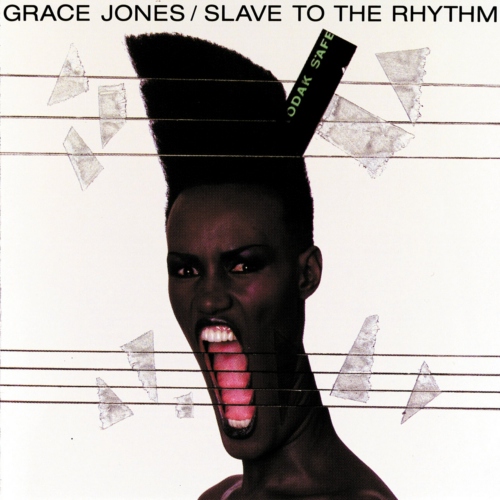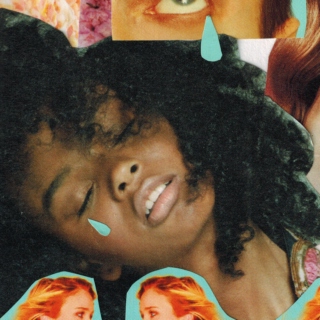Let's Make Love Before We Die: A Spotlight on Grace Jones |
You’ll often find Grace Jones' name alongside other representatives from the world of pop music, from Madonna to Beyonce to Lady Gaga. She’s been encouraged over the course of her 40 year career to emulate some of these artists so as to embody pop music more neatly, adapt to trends, and grow her popularity. She of course rejected countless offers to collaborate or borrow from her contemporaries: “I cannot be like them, except to the extent that they are already being like me.”
It’s true: there’s nobody like Grace Jones, no matter how many have tried. There are plenty of iconic artists who have bent genres with their music and created outlandish fashion aesthetics or pushed the boundaries of pop stardom, but nobody has done all of those things as steadily or as long. In a time now rife with tired, cash-grab reunion tours by classic artists dragging a legacy behind them that they’re too tired to carry, go to a Grace Jones show and you’ll see a nearly 70-year-old woman hula hooping in little more than body paint, with the same energy and physique you would have seen 30 years ago. During a recent performance at the Greek Theater in Berkeley we were lucky enough to catch, she played well past when the event staff threatened to pull the plug. When they cut the power during her closer, “Slave to the Rhythm,” she just laughed and remarked, "I didn't think they'd actually do it."

She came by this identity fiercely. Born in Jamaica and raised in Upstate New York in a household that was, as she puts it, “all about the Bible and beatings,” the seeds of subversion and rebellion were sown early. She’s undeniably a product of that environment, self-describing with characteristic defiance: "I am very militant and disciplined. Even if that sometimes means being militantly naughty, and disciplined in the arts of subversion.”
In 1975, she left Syracuse, going first to Manhattan then Paris to work as a model while auditioning for film and TV roles. Her first impression here -- looking out from magazine covers with her signature aesthetic: androgynous, sleek, alien, severe-- is one that would last. The look she brought to the table carried its own kind of starpower; she only needed a studio to become an unstoppable pop force. Of course, it didn’t hurt to get a little push from disco producer (and fellow model) Tom Moulton, with whom she recorded her breakout single “I Need a Man,” which saw radio play as well as heavy rotation in the queer disco scene based out of clubs like 12 West and the Paradise Garage, earning her a distinction as “The Queen of Gay Disco.”

Over this phase of her career many of her biggest hits were covers (such as Edith Piaf’s “La Vie en Rose,” Iggy Pop’s “Nightclubbing,” The Normal’s “Warm Leatherette”) spiked with the flavors of her fascination: disco, reggae, R&B, tango, house. But she really came into her own as a singular pop entity on what is probably her best-known record, 1985’s Slave to the Rhythm. It’s a spectacular synthesis of the styles she had been exploring in her previous records, Nightclubbing and Living My Life. But it was also a concept album and a declaration of self: her blackness, her queerness, her strangeness. Slave put Grace Jones on full display before the world in a way that was, and still is, impossible to ignore.

Her chameleon nature and her genre-hopping make exploring her through a forum like 8tracks all the more exciting. All kinds of roads open up to you, avenues of exploration where you can find artists she shared the spotlight with and artists she inspired, a whole world that exists the way it does because she lived in it.
One of the avenues where you’ll find her again and again is that most perpetually popular of 8tracks offerings: sex playlists. Which is again altogether unsurprising; Jones is famously confrontational with her hypersexual nature, from her suggestive dance anthems (“Pull Up to the Bumper,” “Nipple to the Bottle”) to her propensity to appear nude at social gatherings and performances. She is as much a sexual and feminist icon as she is a musical one, and the impact that she had on sex positivity, especially as it relates to androgyny and queer identity, cannot be overstated.
80'seedy
by nirvanastephen
80'seedy
by nirvanastephen
Feeeeeeeeeeel Up
by OR2OR3OR4
Feeeeeeeeeeel Up
by OR2OR3OR4
Women to Know If You're Born in the 1980s
by BitchTapes
Women to Know If You're Born in the 1980s
by BitchTapes
Attention, Please
by RookieMag
Attention, Please
by RookieMag
She has worn many faces and means a lot of things to many people, as a musician, a model, an actress, an artist. More than anything she is an icon of freedom. She looms large as an emblem of defiant self-love and a rejection of those who would try to take it from you. She does whatever she wants so we can see how that’s done.
Featured illustration by Maximillian Piras




2 comments on Let's Make Love Before We Die: A Spotlight on Grace Jones
Love it! If you have a chance, also definitely recommend this from her and Paul Morley - 'I'll Never Write My Memoirs': http://www.simonandschuster.com/books/Ill-Never-Write-My-Memoirs/Grace-Jones/9781476765082
⃠Super#5398 was here145 artist September 10, 2016
Great article @jasonwaterfalls! Gotta love that Grace.
⃠